With Halloween just around the corner, what better place to take your gaming efforts than to a nearby cemetery? If you’re playing Pokémon Go, there’s a good chance you’ll find a good variety of ghost Pokémon haunting these areas, as well as some of the new Team Rocket Pokéstops. Along the way, if you pay attention to the game stops, you can learn about some of C-U’s founding families.
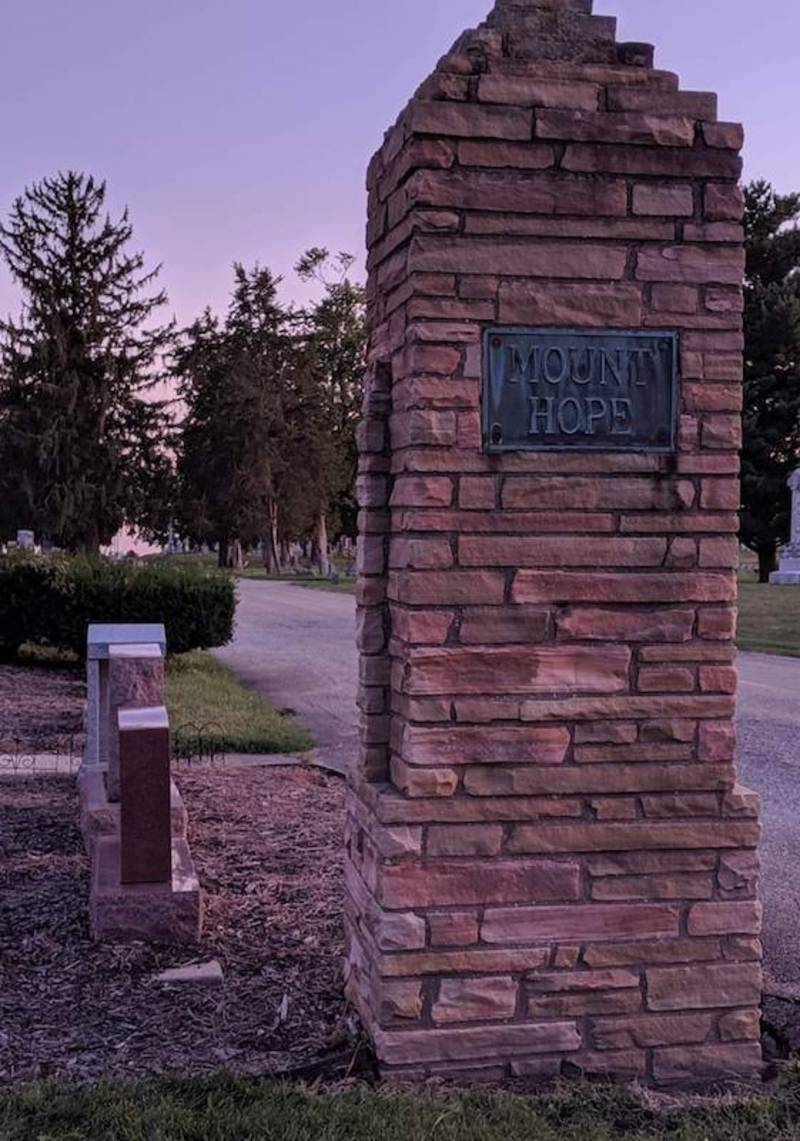
Mount Hope Cemetery
As the oldest cemetery in C-U, Mount Hope holds some of the oldest internments, dating all the way back to 1856. It was originally built on land donated by Jesse Burt, a local farmer who realized the burgeoning community was in need of a more organized cemetery. Mount Hope served the community as the main graveyard until 1907, when Rosemont and Woodlawn were founded.
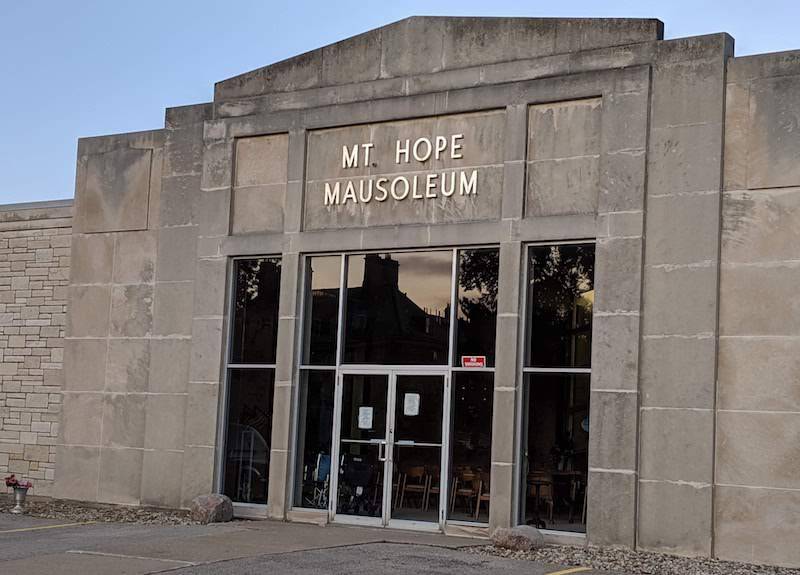
Entering Mount Hope from Pennsylvania Avenue, you’ll pass the front gate, then the mausoleum, both of which will show up on your game map. Across from the mausoleum is a memorial honoring the veterans buried here. In-game, it’s identified as “Defenders of the Flag.”
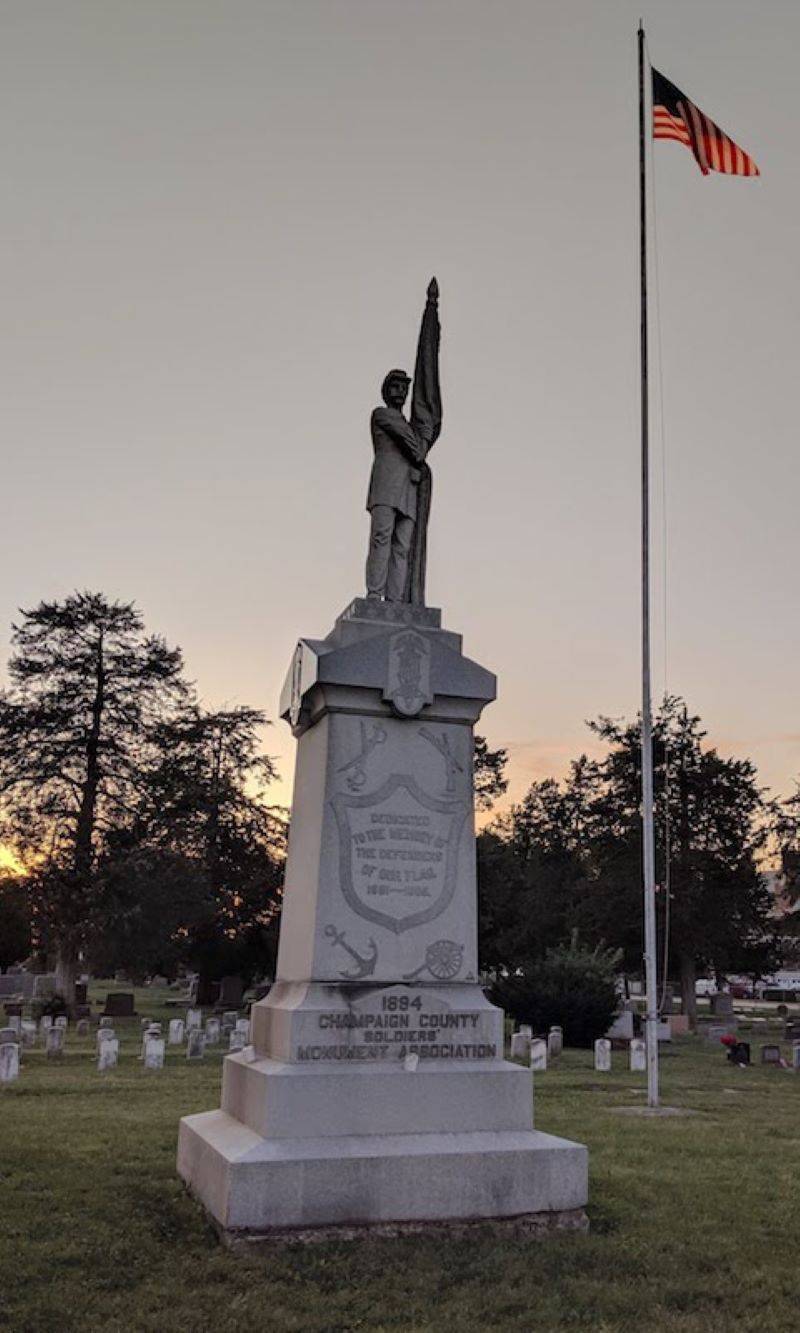
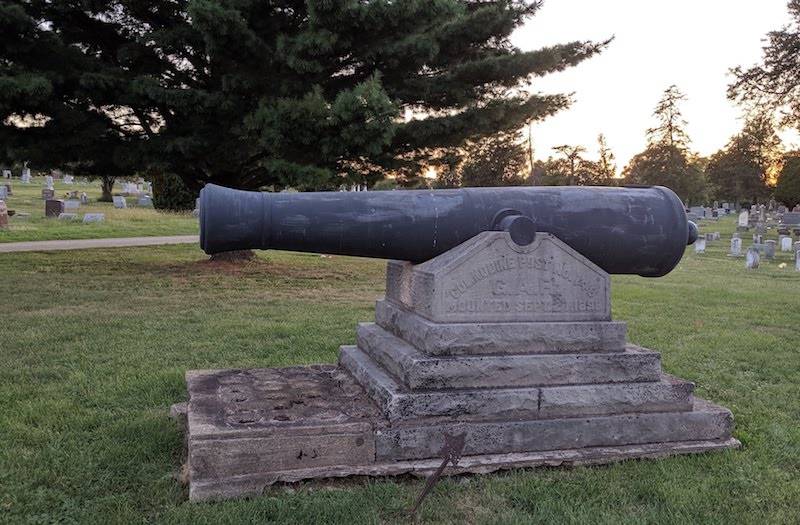
The majority of the veterans buried in this section of the cemetery fought in the Civil War, and the memorial is maintained by the Grand Army of the Republic, an organization started by Civil War veterans. The cannon dates to 1851 and was built at West Point Foundry. Veterans of other wars, including the Revolutionary War, the War of 1812, and both World Wars, are also buried here.
Exploring beyond the gaming map, you’ll also find the Jewish section of the cemetery on the west side. With a bit of looking, you’ll find stones with marks from a variety of religious and ethnic traditions and even a grave or two inscribed with the Cyrillic alphabet. There’s also a potter’s field near Pennsylvania Avenue. As was the custom in Mount Hope’s early days, this section was reserved for suicide victims, criminals, and individuals with no families to identify them or without the means to pay for a burial.
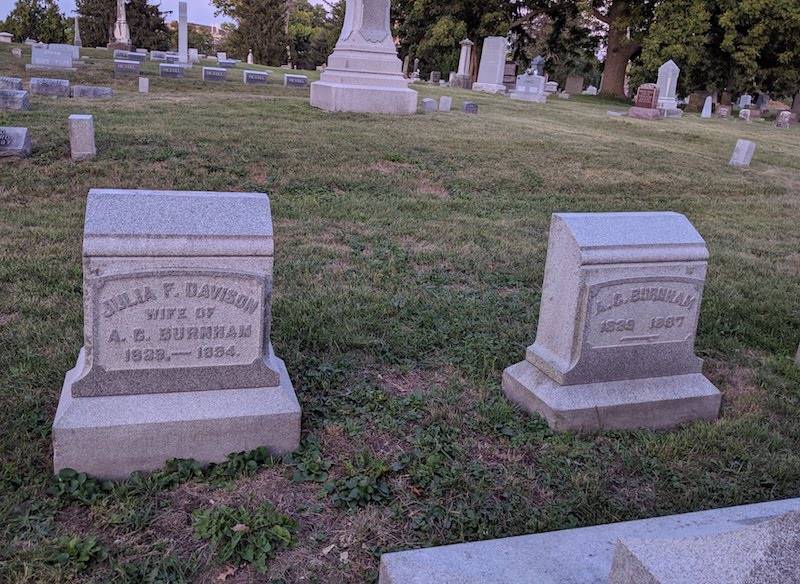
Venture farther south and east into the grounds, and you’ll find the Burnham family tombstones. Dominated by a tall column, this section marks the resting places of the founders of Burnham City Hospital. The Burnhams also provided Champaign with the building that housed the town’s first library. Daniel Hudson Burnham was a well-known architect whose work can still be seen in Chicago and other areas. The Burnham residence, which Daniel Burnham designed for the Champaign branch of the family with his partner John Wellburn Root, was demolished in 2018 to accommodate the expansion of Champaign Central High School.
Albert C. Burnham donated the property for Burnham City Hospital, which was named for his wife, Julia. Julia Burnham was well-known in CU as a humanitarian and one of the first women to be a member of the school board. Unfortunately, she passed away before the hospital was completed. Burnham Hospital served Champaign from 1895 to 1992, when Burnham merged with Covenant Medical Center. The building was torn down in 2004.
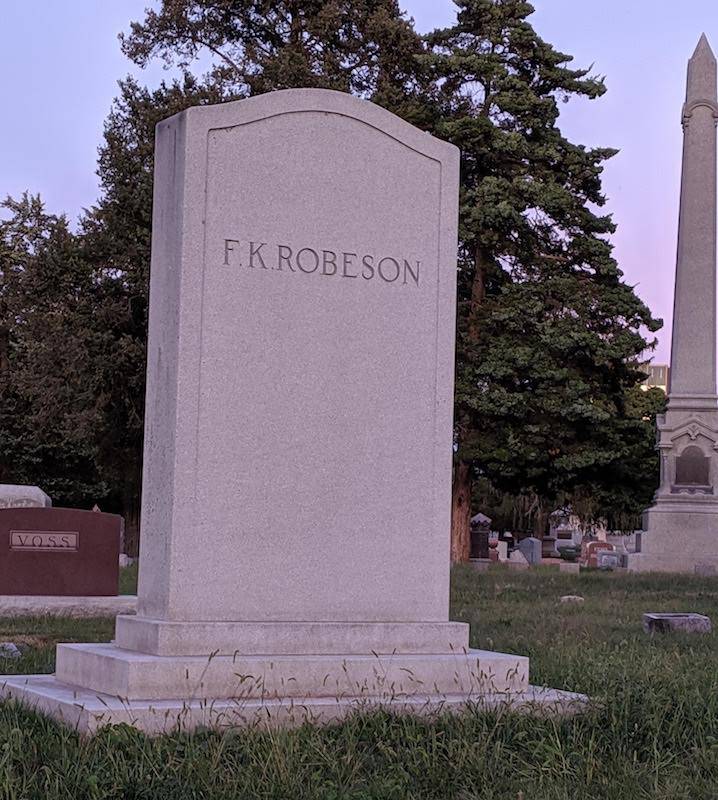
For decades, Robeson was also a well-known name in Champaign-Urbana. The Robeson Department Store, founded by Frank Kern Robeson, served the people of Champaign from 1874, when it opened as a dry goods store, to 1990, when it closed in the face of modern competition. In 1951, it became the first area store to feature an escalator, thanks to the innovation of Frank Kern Robeson, Jr., who also donated property to the city that was used for a school and a public park.
Roselawn Cemetery
To those unaware of the history, Roselawn seems like just the western portion of Mount Hope. But it was originally a separate but adjacent facility, and for a time there was conflict, competition, and bad blood between the separate owners. Roselawn was originally called New Mount Hope, but due to the conflicts, was renamed to make it clear the two cemeteries were not affiliated.
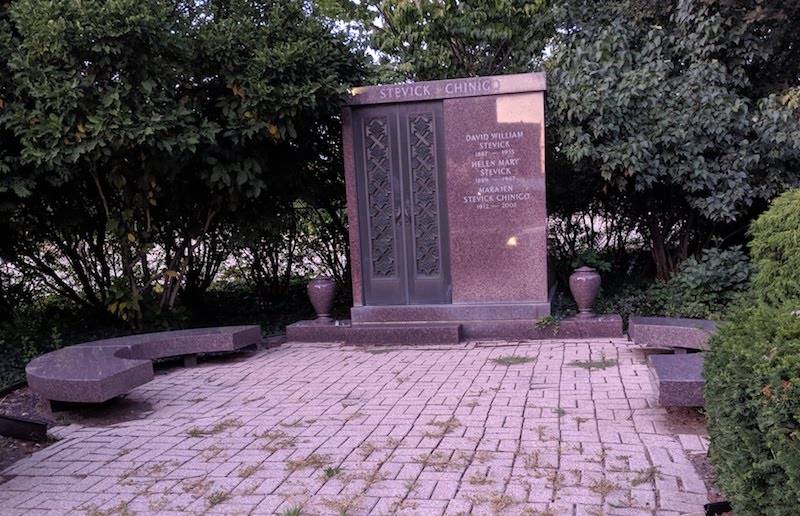
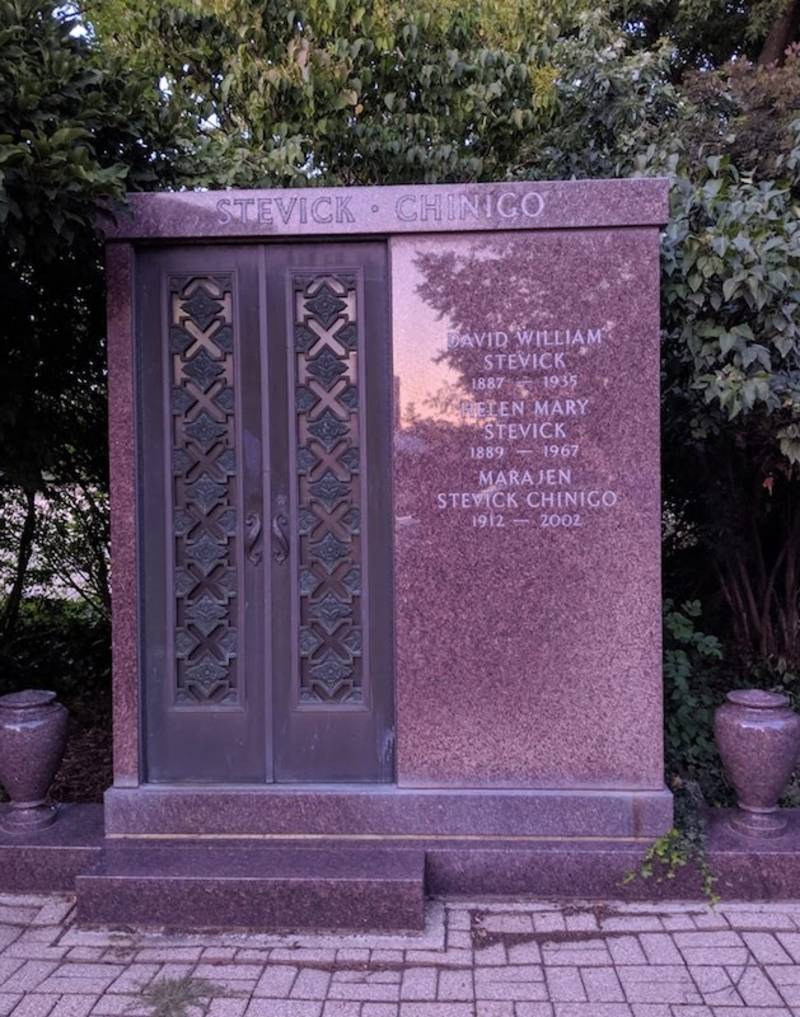
One of the more prominent memorials in Roselawn is located on the far west side, right across Fourth St. from Memorial Stadium. This memorial, with its tall marker and curved benches, honors the Stevick-Chinigo family. David Stevick, whose name is featured at the top, owned the Champaign Daily News. In 1919, he purchased the Champaign Daily Gazette and promptly merged the two papers into one — the News Gazette — which still stands as our local daily paper.
After David Stevick’s death in 1935, his wife, Helen, took over management of the paper. In turn, she was succeeded by their daughter, Marajen Stevick Chinigo.
Woodlawn Cemetery
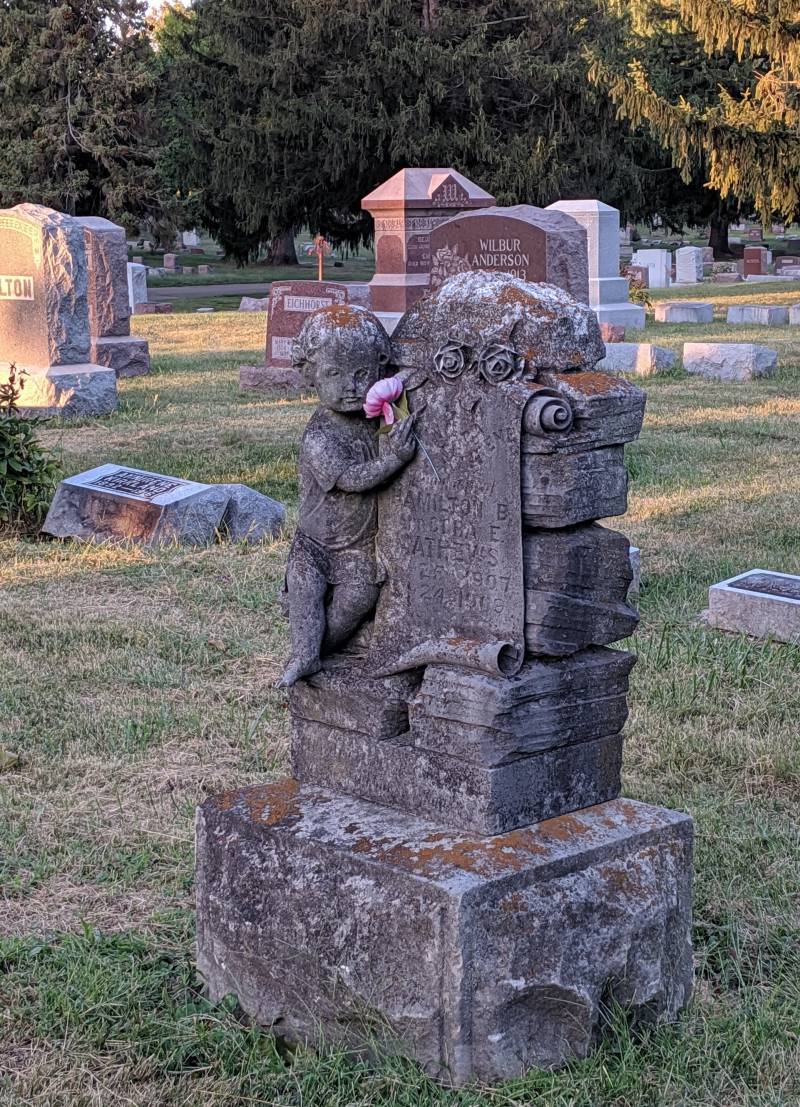
By the arrival of the twentieth century, Mount Hope was filling up, and Champaign-Urbana was in need of new burial plots. Out of this need came Woodlawn in Urbana.
Perhaps the best-known local figures buried at Woodlawn are members of the Busey family. The name graces Busey Bank, Busey St., and Busey Woods, found just across the road from Woodlawn. The cemetery itself began on twenty acres of Busey family land provided by General Samuel T. Busey, a noted Civil War veteran. His dream of a peaceful resting place where Urbana families could spend an afternoon having picnics and family gatherings. Working with Dr. Lauren T. Judy, a landscape architect, he brought the dream to fruition in 1907, then extended the existing streetcar line so the cemetery was easily accessible to Urbana residents. Dr. Judy was so dedicated to making Woodlawn match his vision that he turned down opportunities to work on other cemeteries. He, General Busey, and several other members of the Busey family are now buried on the 42-acre expanse.
General Busey founded Busey Bank with his brother, Simeon H. Busey, and had a distinguished political career, serving as Urbana’s mayor from 1880-1889, then in the House of Representatives from 1891-1893. He died in 1909 as the result of a boating accident.
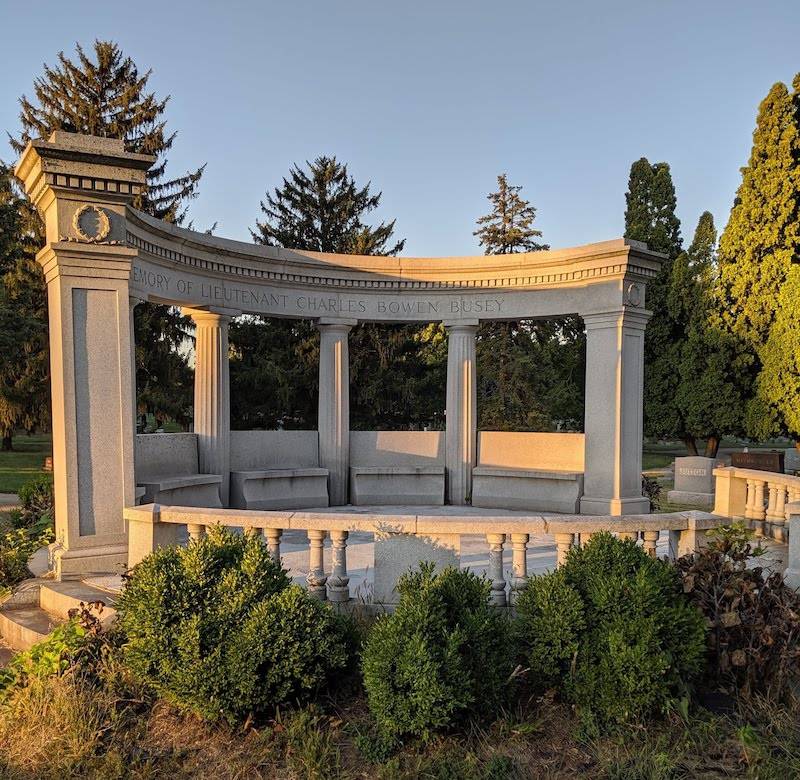
One of the most prominent memorials at Woodlawn is a Roman-style arch dedicated to Charles Bowen Busey. Charles was General Samuel Busey’s son, and was killed in action during World War I. His extravagant memorial dominates the south side of the cemetery.

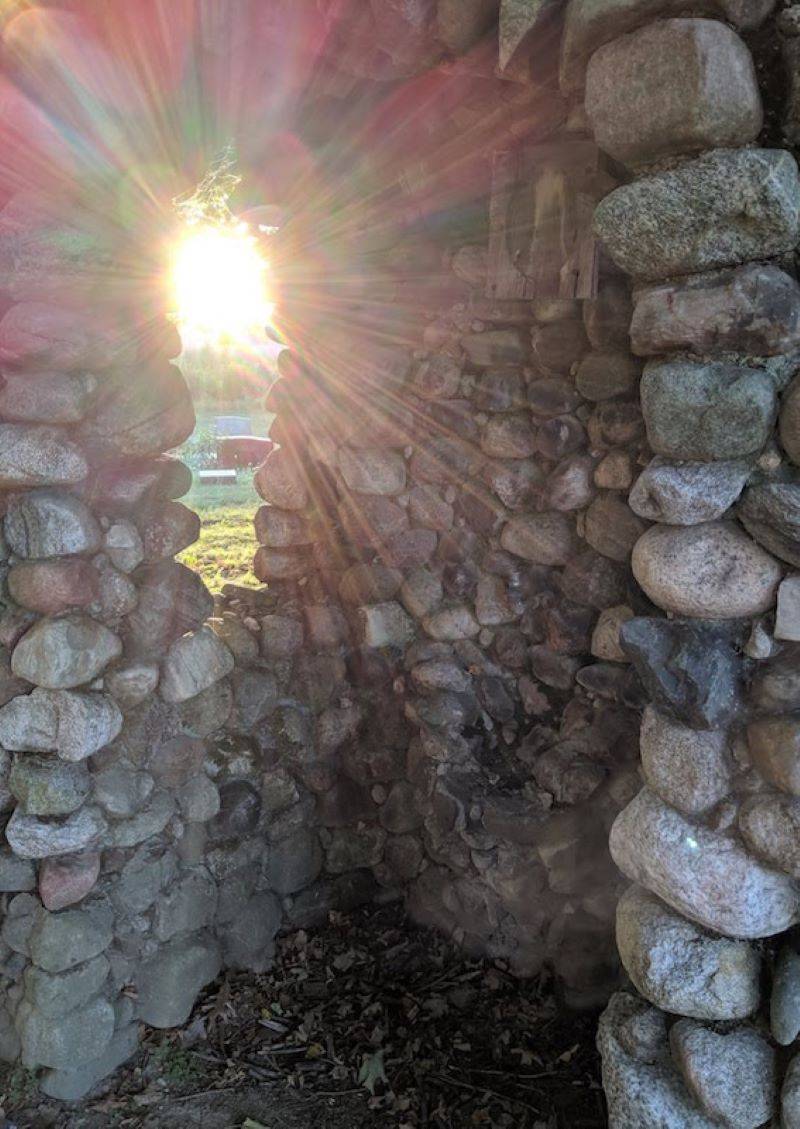
A prominent landmark in Woodlawn is the rustic stone fountain located near the south side, presumably part of Dr. Judy’s original landscaping.
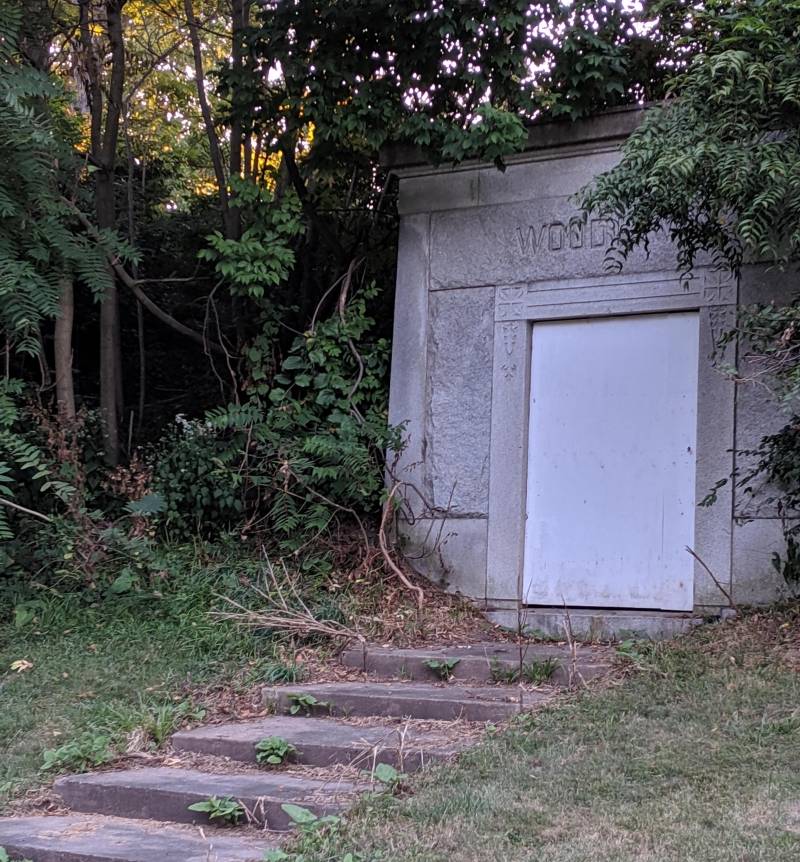
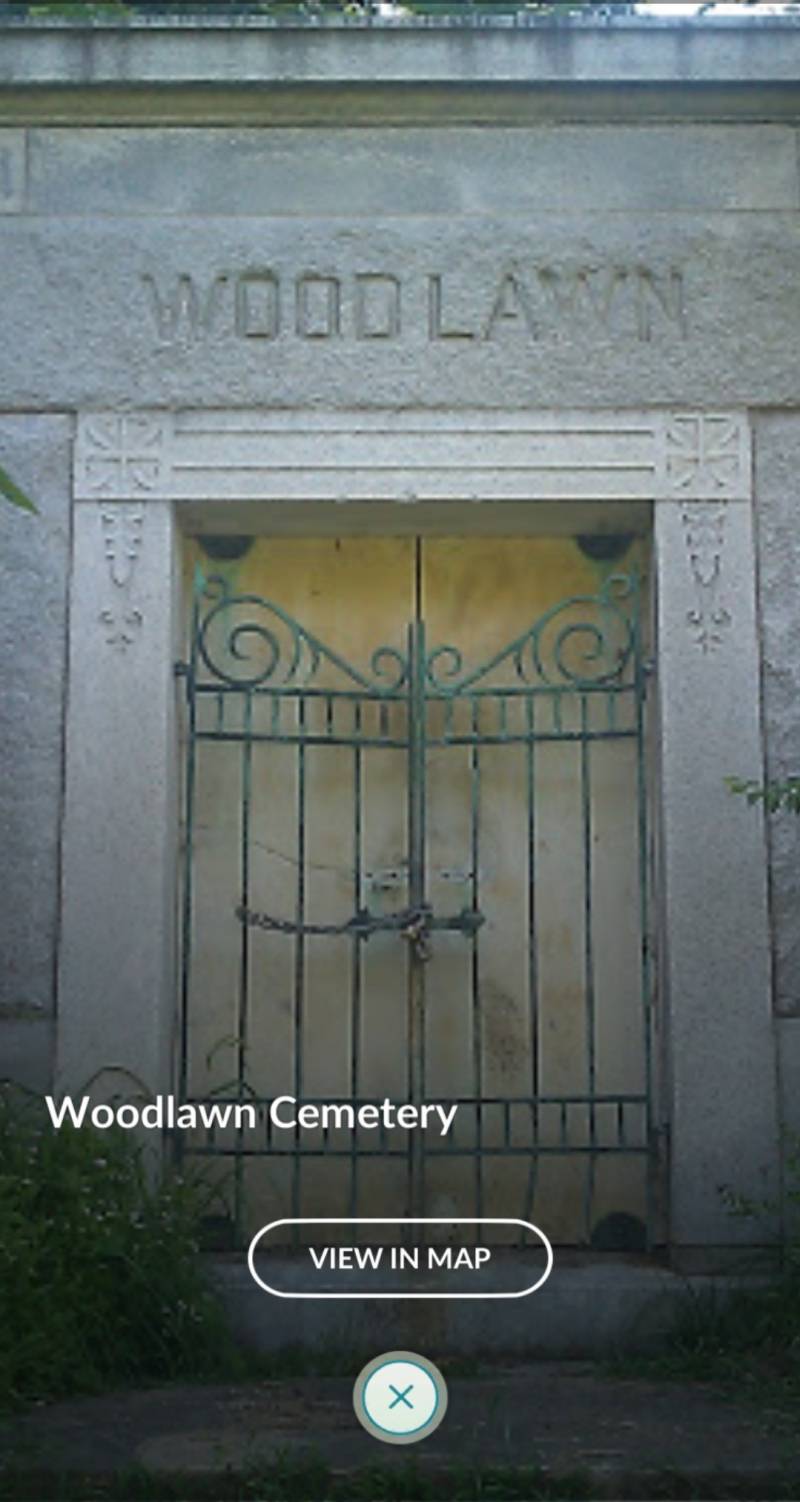
The Woodlawn Mausoleum built into the hillside can be seen from the road as you pass between Woodlawn and Busey Woods. Unfortunately, the wrought iron gate that once guarded the entrance was vandalized and removed.
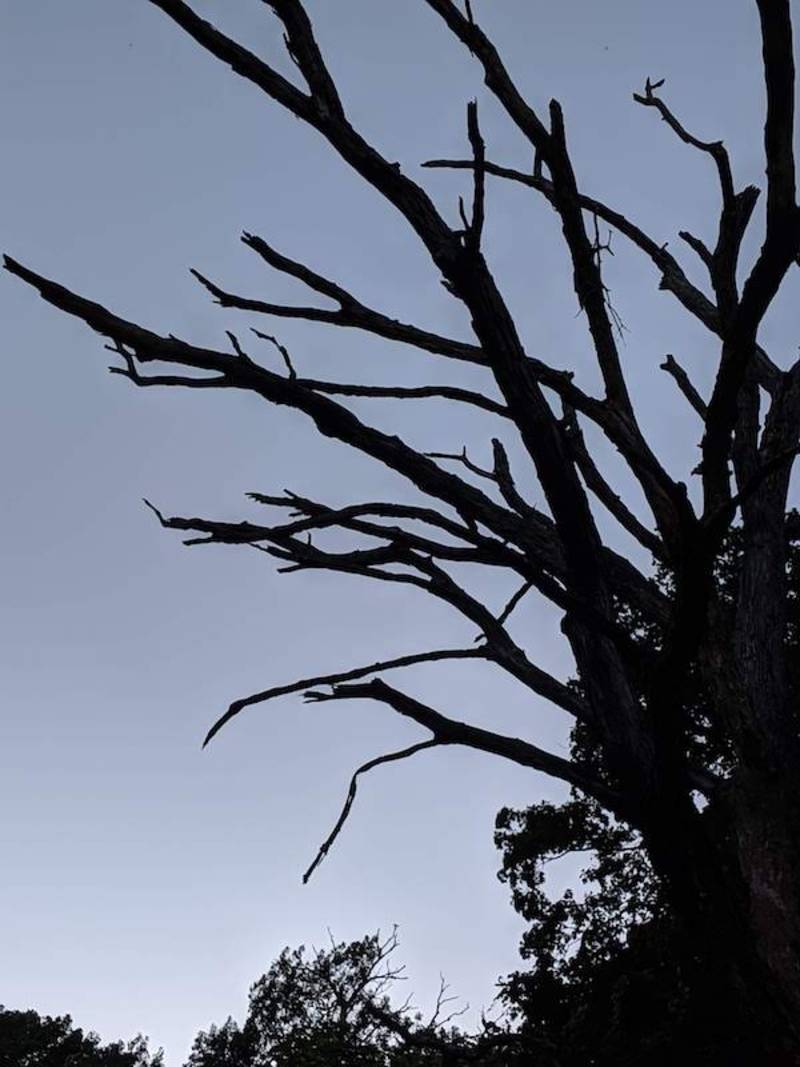
Even if you don’t believe in ghosts, a visit to C-U’s cemeteries can provide you with a great afternoon of gaming and a deep dive into local history, so turn your Halloween into an educational opportunity and drop by Mount Hope, Rosewood, or Woodlawn for a tour of the past.
Photos by Katriena Knights
Screenshot of the Woodlawn Mausoleum with intact wrought iron gate from Pokémon GO








